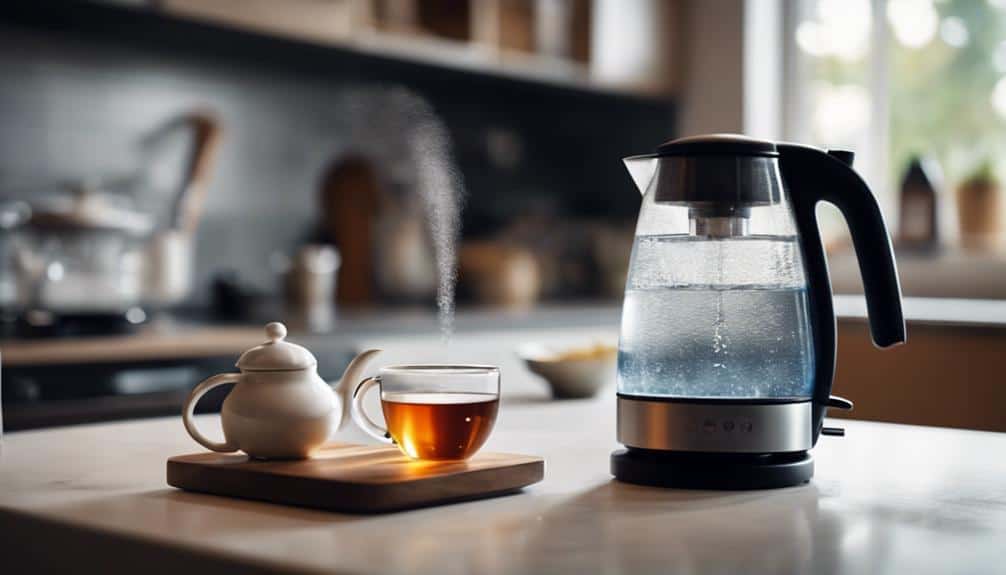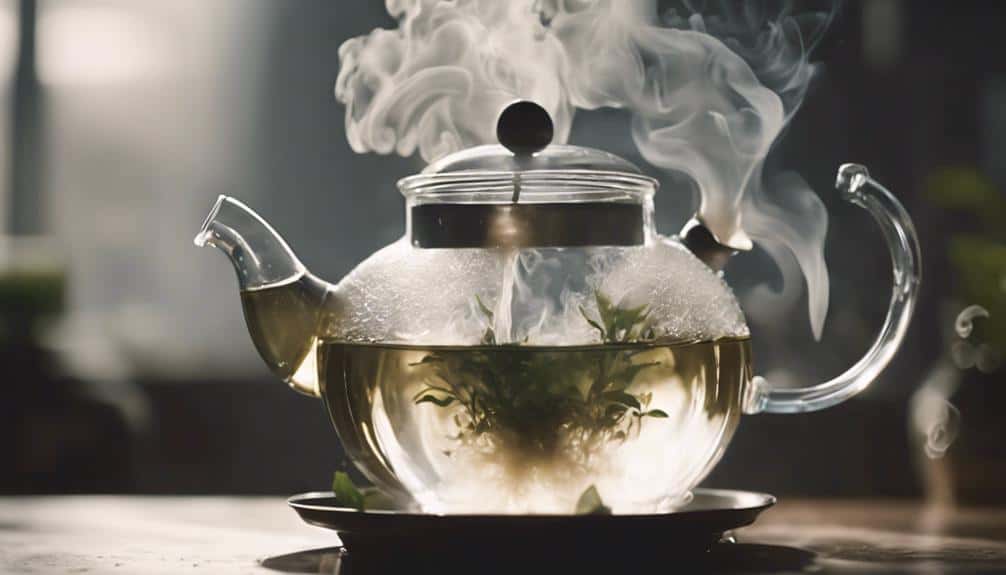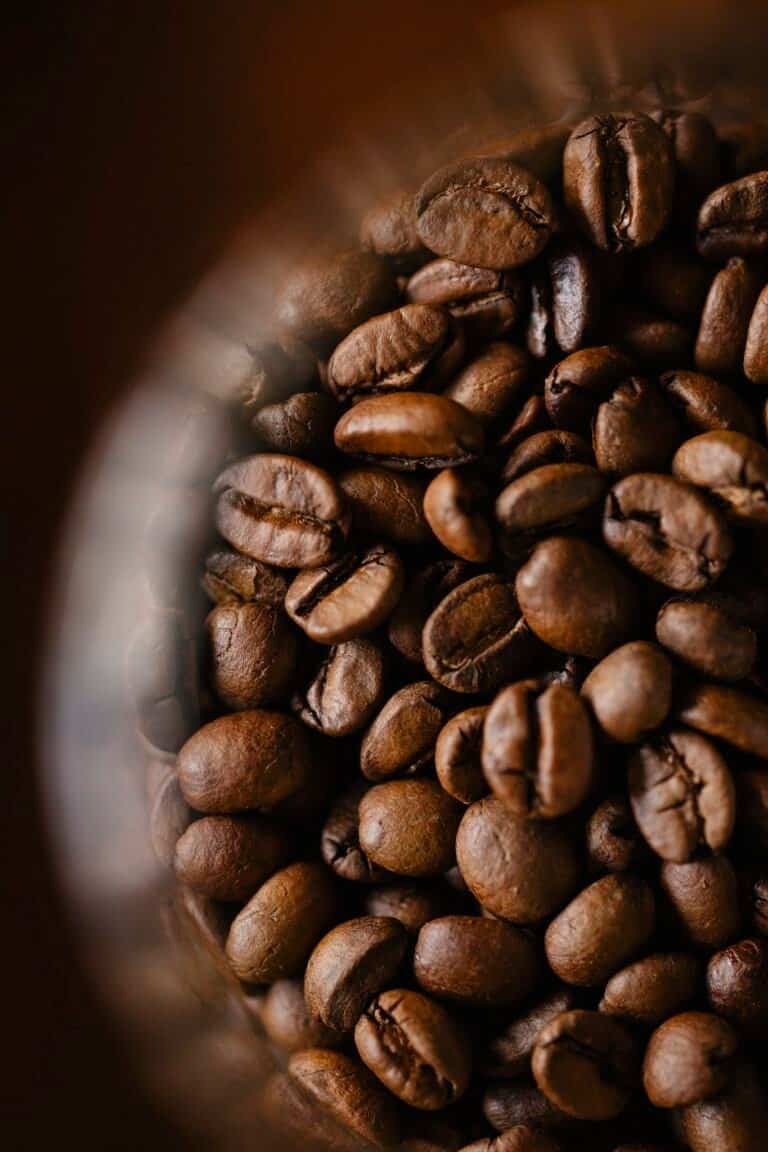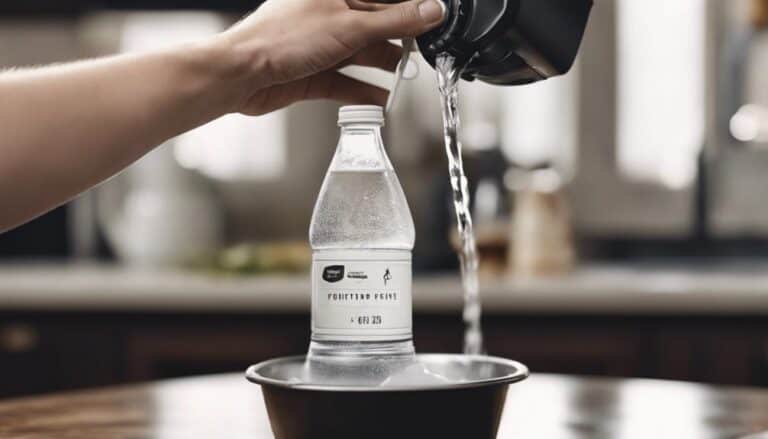A Guide to Making Tea With an Electric Kettle

As someone who enjoys a soothing cup of tea, I've come to appreciate the simplicity and efficiency an electric kettle brings to the tea-making process. From filling the kettle with just the right amount of water to selecting the most suitable heating function, each step plays a significant role in achieving that perfect brew. However, there's an essential element that often gets overlooked, a detail that can elevate your tea experience to a whole new level. Curious to uncover this essential tip that can make all the difference?
Setting Up the Electric Kettle
When preparing to make tea with an electric kettle, the first step is to place the kettle on a flat, stable surface for safe operation. This guarantees that the kettle remains steady during the boiling process. Once the kettle is securely in place, it's vital to confirm that it's plugged into a power source before proceeding. This step ensures that the kettle can efficiently heat the water to the desired temperature for making tea.
Using an electric kettle to boil water is a convenient and quick method to prepare hot water for tea. The kettle's heating element rapidly heats the water, making the process efficient and time-saving. By utilizing the electric kettle, you can have hot water ready for your tea in a matter of minutes. This speed and convenience make the electric kettle a popular choice for tea enthusiasts looking to enjoy a quick and flavorful cup of tea.
Filling the Kettle With Water
When preparing to make tea using an electric kettle, it's essential to fill the kettle with cold, filtered water up to the designated level indicated on the appliance. Overfilling should be avoided to prevent potential spills and guarantee the kettle functions efficiently.
I always refer to the marked water level indicators inside the kettle for precise measurement, as different models have varying maximum fill levels.
Water Level Check
To guarantee proper water level when filling your electric kettle, always refer to the marked maximum fill line inside the kettle. This line indicates the maximum capacity the kettle can safely hold. Overfilling the kettle beyond this point can lead to spills, affect the efficiency of heating, and pose safety risks.
By adhering to the recommended guidelines for water level, you not only promote safe operation but also help in prolonging the lifespan of your electric kettle. Maintaining the correct water level is essential for efficient heating and quick water boiling.
Always follow the indicated maximum fill line to prevent spills, promote safe usage, and optimize the performance of your kettle.
Avoid Overfilling
Overfilling the electric kettle with water can lead to messy spills and potential safety hazards during boiling. It's crucial to pay attention to the max fill indicator and follow the recommended water level guidelines provided in the kettle's manual. By avoiding overfilling, you not only prevent spills but also maximize boiling efficiency, reduce the boiling time, and minimize energy consumption. Maintaining the correct water level ensures safe operation of the kettle and contributes to making a perfect cup of tea efficiently.
| Aspect | Importance |
|---|---|
| Safety | Critical |
| Boiling Efficiency | Optimized |
| Energy Consumption | Minimized |
| Perfect Cup of Tea | Enhanced |
| Spill Prevention | Essential |
Use Fresh Water
Using fresh water in the electric kettle is crucial for guaranteeing the best flavor in your tea. It's important to fill the kettle with the appropriate amount of fresh water based on the quantity of tea you plan to make.
Avoid reusing water that has been previously boiled, as it can impact the taste of your tea. Whether you're brewing tea leaves, tea bags, or herbal tea, starting with fresh water will enhance the overall flavor.
The electric kettle's temperature sensor will make sure the water reaches the ideal temperature for brewing your tea. By using fresh water and the right amount for your tea, you'll ensure a delicious and aromatic cup every time.
Remember not to overfill the kettle to prevent spills and guarantee efficient boiling on the electric base.
Placing the Kettle on Base
Before placing the electric kettle on its base, make sure it's securely positioned. Proper alignment on the base is vital for the safe and efficient operation of the kettle. The base serves as the connection point for power and the heating elements inside the kettle. When the kettle is placed on the base, it activates the heating process necessary for boiling water.
Ensuring that the electric kettle is securely placed on its base is essential to prevent accidents or malfunctions during use. A properly aligned kettle guarantees that the heating elements function correctly, leading to a quicker boiling process. Additionally, a securely placed kettle promotes stability, reducing the risk of spills or tipping over while in operation.
Selecting the Heating Function

After securely placing the electric kettle on its base, the next step is to choose the desired heating function for your tea-making process. Electric kettles offer various heating functions to cater to different tea types and preferences. Here are some key points to keep in mind when selecting the heating function:
- Electric kettles come with specific temperature settings for various types of tea such as green, black, or herbal, ensuring the water reaches the desired temperature for best brewing.
- Advanced models feature presets for specific brewing temperatures, taking the guesswork out of achieving the perfect cup of tea.
- The temperature sensor in the kettle helps in maintaining water at the ideal temperature, preventing it from reaching the boiling point if not required.
- Selecting the appropriate heating function allows for precise water temperature control, essential for enhancing the flavor profiles of different teas.
Understanding and utilizing the heating functions of your electric kettle can greatly improve your tea brewing experience, ensuring a delightful and flavorful cup every time.
Pouring Water Over Tea
To achieve peak flavor extraction, carefully pour water over the tea leaves, ensuring the essential temperature for the specific tea type. The water temperature plays a crucial role in revealing the flavors of the tea.
Slowly pouring the water over the leaves in a steady stream helps in saturating the leaves evenly, aiding in the extraction process. It's beneficial to pour the water in a circular motion to make sure all the leaves are in contact with the water, promoting a consistent infusion.
Adjusting the pouring speed and angle based on the type of tea and the brewing vessel used can optimize the flavor profile of the tea being brewed. By paying attention to these details while pouring water over the tea leaves, you can enhance the flavor extraction and ultimately enjoy a more flavorful cup of tea.
Allowing Tea to Steep

As I allow the tea to steep, I let the flavors and aromas infuse gently into the hot water, creating a delightful and well-balanced brew. Steeping tea is an important step in the tea-making process, where the magic of extracting the essence of the tea leaves happens.
Here are some key points to keep in mind:
- The tea leaves release their flavor and aroma into the hot water, creating a sensory experience.
- Proper steeping times are essential for each type of tea to achieve the best taste.
- Oversteeping can result in a bitter taste, so it's important to follow the recommended steeping times closely.
- The duration can vary based on the type of tea; black tea typically steeps for 3-5 minutes, green tea for 2-3 minutes, and herbal teas for 5-7 minutes.
Unplugging and Handling Hot Water
I always make sure to unplug my electric kettle immediately after use to prevent any accidents.
Handling hot water requires caution to avoid burns, so I use a heat-resistant glove or towel when touching the kettle.
It's important to be careful when pouring hot water to prevent splashes and burns.
Safety When Hot
When handling hot water from the electric kettle, remember to unplug it immediately to prevent accidents or mishaps.
- Unplug the electric kettle to guarantee safety.
- Use caution to prevent burns or scalds.
- Place the kettle on a stable surface to avoid spills.
- Keep children and pets away to prevent injuries.
It is essential to take these safety measures seriously to avoid any potential harm. Always use oven mitts or pot holders when handling the hot kettle to protect your hands from burns. By following these guidelines, you can enjoy your tea-making process safely and efficiently.
Proper Pouring Technique
After ensuring the electric kettle is unplugged for safety, the key to mastering the proper pouring technique lies in using the handle to control the flow of hot water without spills. Grip the handle firmly for stability and tilt the kettle slowly to manage the water's flow rate.
It's important to be cautious of the steam and hot surfaces, ensuring no contact to prevent burns. Keep the kettle's spout close to the cup or teapot while pouring to minimize splashing.
Remember to handle the kettle with care to avoid accidents. By maintaining control over the pouring process and being mindful of the hot water and steam, you can pour safely and enjoy your perfectly brewed tea.
Cool Before Storing
To guarantee safe storage and prevent accidents, always allow the electric kettle to cool down before handling or storing it. After use, remember to unplug the kettle promptly. Here are some essential tips for handling hot water safely:
- Use oven mitts or a towel to handle the hot kettle.
- Wait patiently for the kettle to cool off completely before attempting to move it.
- Follow the manufacturer's guidelines for safe handling and storage.
Safety Tips for Kettle Usage
Curious about how to guarantee safe usage of your electric kettle when making tea?
When it comes to electric tea kettles, safety is paramount. To guarantee a secure tea-making experience, opt for kettles made of stainless steel, ceramic, or clear glass. These materials are safe for boiling water and don't pose health risks like plastic kettles might.
Electric kettles are designed to boil water quickly and efficiently, making them ideal for preparing your favorite teas. Avoid placing tea bags inside the kettle to prevent flavor mixing and residue buildup, which can impact the taste of your tea.
Always boil just the amount of water you need, and refrain from using the kettle for anything other than heating water. By following these safety tips and using an electric tea kettle specifically designed for the task, you can enjoy a worry-free tea-making experience.
Cleaning and Maintenance of the Electric Kettle

Regularly descaling your electric kettle with vinegar helps remove mineral deposits and maintain its efficiency. To keep your electric kettle in top condition, follow these maintenance tips:
- Wipe the exterior of the kettle with a damp cloth after each use to prevent residue buildup.
- Clean the spout and lid regularly to avoid blockages that can affect performance.
- Store the electric kettle in a dry, open space to prevent mold or mildew growth.
- Avoid using harsh chemicals for cleaning to protect the kettle's components.
Conclusion
To sum up, using an electric kettle to make tea is a quick and convenient method that yields delicious results. By following the steps outlined in this guide, you can easily enjoy a hot cup of tea tailored to your preferences.
Remember to handle the kettle with care, unplug it after use, and keep it clean for peak performance.
Cheers to a perfect cup of tea made with the help of your electric kettle!





